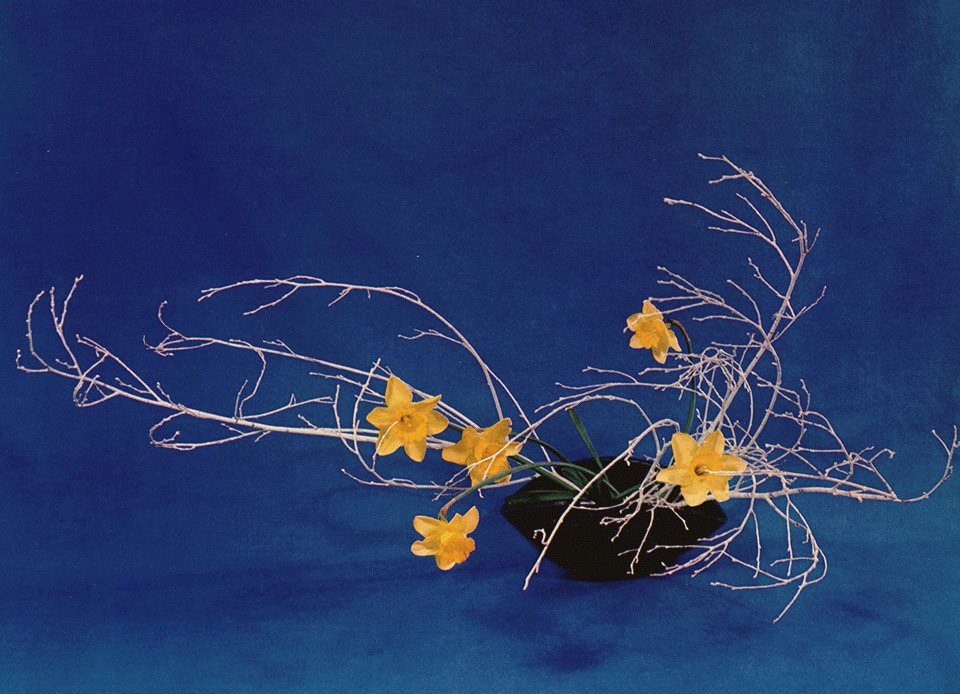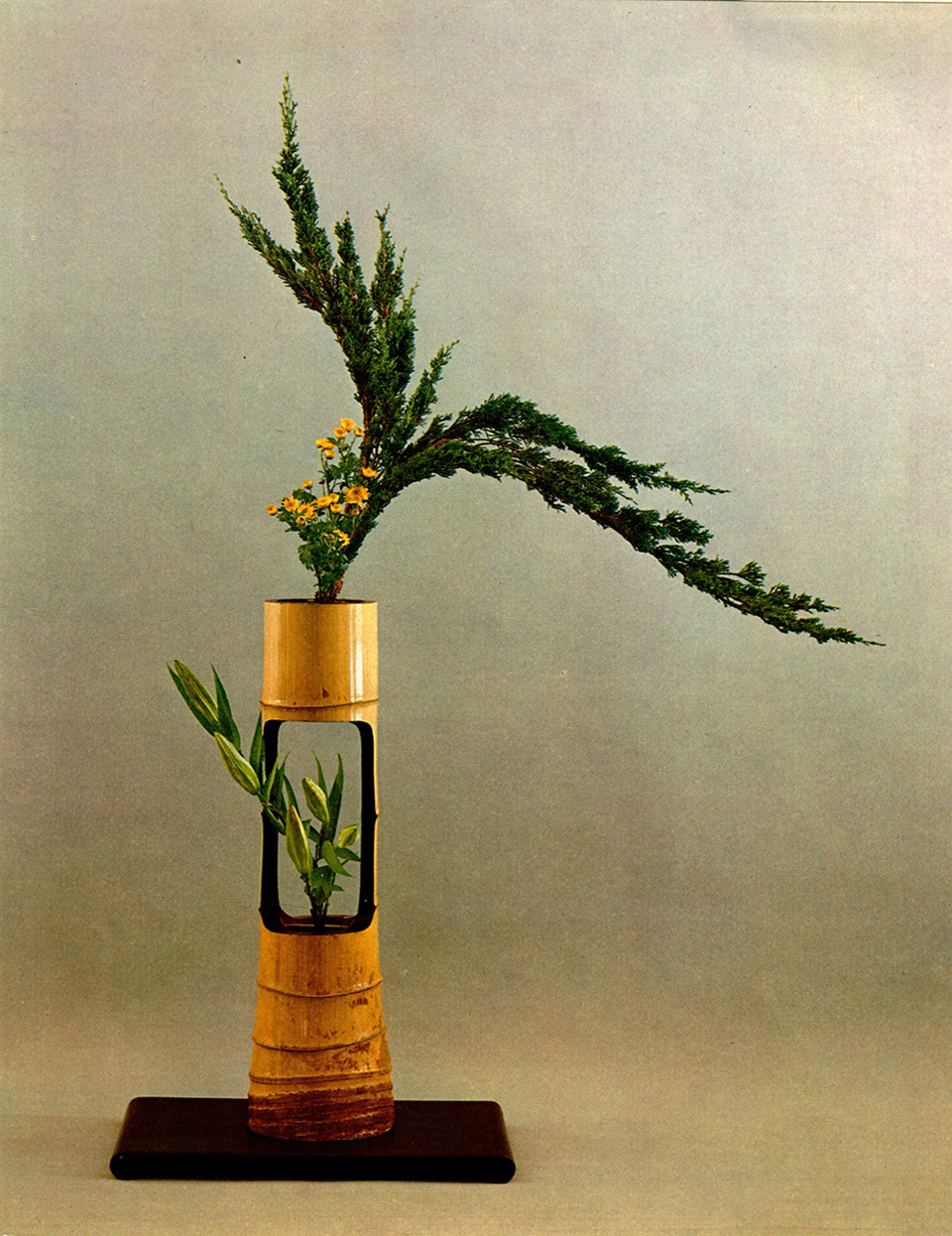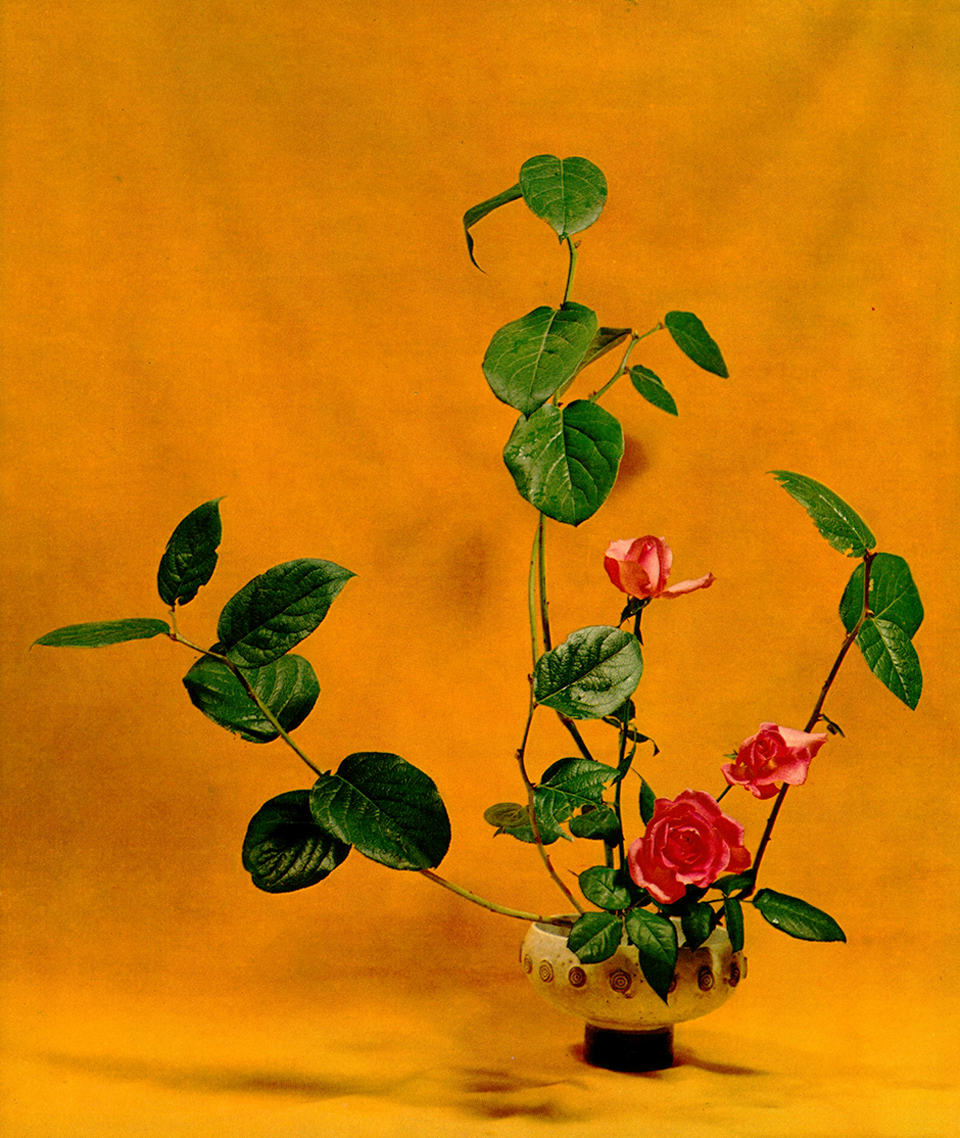
The Art of Arranging Flowers: A Complete Guide to Japanese Ikebana by Shōzō Satō.
Sofu Teshigahara, founder of Tokyo’s Sogetsu School, said, “Ikebana is not just about flowers, it is about the person who arranges them.” The practice of Ikebana can be traced back to 6th century Japan, and the introduction of Buddhism. It was customary for Buddhist missionaries to leave flower offerings at temples.
Ikebana became a formally taught art in the 15th century with the creation of the first school, Ikenobo, which still operates today. There are two original Japanese floral arranging styles. The first, tatahena (“standing flowers”), features flowers upright in their vase or vessel. The other is nageire (“thrown in”), in which flowers are loosely or organically displayed.
Today, the 600-year-old Japanese tradition has evolved into a modern art, practiced in its classic and contemporary forms around the world.




